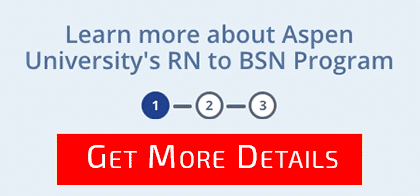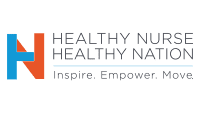After 6 years of hard work, St. Vincent’s Medical Center (SVMC) in Bridgeport, Connecticut, obtained Magnet Recognition® in November 2012. Two years earlier, the Institute of Medicine (IOM) had issued a call to action to increase the proportion of nurses with baccalaureate degrees to 80% by 2020. According to the IOM, nurses with bachelor of science in nursing (BSN) degrees possess the skills, knowledge, and abilities needed to manage the increasing complexity of both patients and the healthcare system. (See The evidence is in by clicking the PDf icon above.)
After obtaining Magnet® designation, SVMC leaders sought to examine the educational level of its nursing workforce and to answer a key question: How does an organization committed to nursing excellence actualize the goal of an 80% BSN workforce by 2020? For the answer, we did what any nurse would do—we went to the literature to analyze the evidence. This article describes the steps we took to increase the number of BSNs in our workforce to help meet the 2020 goal.
Four action steps
Our overall strategy for increasing the number of BSNs was to require newly hired nurses without BSNs to obtain BSNs within 5 years. Toward this end, we defined four action steps.
Step 1: Analyze the current nursing workforce
We used the hospital’s nursing database to determine our RNs’ degree status. The database also told us which RNs were working on earning advanced degrees and when they’d complete those degrees. From this data, we determined that as of October 2013, 41.5% of our direct-care RNs had BSNs.
Step 2: Use the VCUHS forecasting tool
A forecasting tool developed in 2010 at Virginia Commonwealth University Health System (VCUHS) by Jeannette Cain, BSN, RN, MSN, CPHQ, allows healthcare providers to determine how hiring strategy and turnover (among other factors) affect the ability to meet the goal of an 80% BSN workforce by 2020. When we extracted certain percentages and sums from our nursing database and entered them into the forecasting tool, we found that 100% of our experienced-RN new hires and 80% of our new-graduate RN hires would need to be at the BSN level. (This took into account that new hires who don’t have BSNs will need to obtain them within 5 years of being hired.) This will bring SVMC to a 79% BSN-prepared workforce by 2020.
Drawing on RNs from our health system
Hiring all BSN-prepared nurses would be the ideal scenario to achieve an 80% BSN workforce. St. Vincent’s College (part of St. Vincent’s Health Services—the same health system as SVMC) has an accredited RN-to-BSN online program. The first cohort of students enrolled in January 2011, and the first 13 graduates received their BSNs in May 2013. Another 30 nurses are expected to earn their BSNs during the 2013-2014 academic year. In January 2014, the college is initiating a fast-track, 15-month option of its RN-to-BSN program that will help recent graduates with associate degrees in nursing (ADNs) from St. Vincent’s and other area community colleges earn a BSN. This track also will be open to other nurses who are able to commit to the time required to complete it.
St. Vincent’s College currently is seeking accreditation from the Connecticut Department of Higher Education and approval from the state board of nursing to offer a 4-year prelicensure BSN program. Pending approval, the tentative time for enrolling the initial class is fall 2014. Once the prelicensure BSN is approved, the college plans to start phasing out its ADN program over 4 years, giving students currently enrolled in that program time to finish the necessary courses. When the college completes the transition from preparing RNs at the associate-degree level to preparing them at the BSN level only, SVMC will reconsider the strategy of hiring 80% new-graduate RNs at the BSN level.
Step 3: Create a sustainable plan for increasing BSN-prepared nurses
SVMC continues to offer tuition reimbursement and flexible scheduling. It also encourages RNs planning to seek advanced degrees to apply for financial aid through their college of choice. To further aid nurses financially in advancing their degrees, a fundraising proposal was submitted to the SVMC Foundation to create the Nurse Education Scholarship Fund. The amount of resources requested was calculated based on tuition costs for the BSN program at four local colleges and one online program. This amount would support tuition for 30 full-time nurses and 30 part-time nurses for 1 year.
SVMC went beyond providing financial support. The professional development council sponsored an onsite program called “Get Smart: A Week of Lifetime Learning.” It included a college meet-and-greet with local and distance-learning colleges and universities, plus 2 days devoted to specialty certification and the “Get Smart Traveling Cart,” which distributed information on educational programs throughout the hospital. Staff members who took the 1-hour information session, “How to go back to school” earned 1 contact hour of continuing-education credit.
Step 4: Evaluate the effectiveness of the changes
Evaluating the results of our effort to increase our BSN percentage requires regular updates and analysis of the SVMC nursing database to help us stay on track. The National Database of Nursing Quality Indicators® (NDNQI®) can determine if the increase in BSN-prepared nurses has led to improved outcomes in nursing-sensitive indicators, such as pressure ulcers, falls, and catheter-associated infections. Nurse satisfaction data from the NDNQI RN Survey will be used to find out if our RNs’ job satisfaction has increased.
What’s next
Much work needs to be done by 2020. SVMC is committed to advancing the educational and professional standards of our nursing workforce to the baccalaureate level and beyond. To care for today’s sicker and more complex patients, nurses must have more skills, knowledge, competencies, and leadership capabilities. They must have more than just the basic knowledge the National Council Licensure Examination was designed to assess. Our RN workforce must be prepared largely at the BSN level to successfully navigate the challenges facing our profession. Advancing toward an 80% BSN workforce is what’s best for our patients and for the future of nursing.
Selected references
Aiken LH, Clarke SP, Cheung RB, Sloane DM, Silber JH. Educational levels of hospital nurses and surgical patient mortality. JAMA. 2003;290(12):1617-23.
Bolton LB. Viewpoint: Future of nursing report: Recommendations to transform our healthcare system. Am Nurse Today. 2010;5(12). myamericannurse.com/Article.aspx?id=7312. Accessed November 23, 2013.
Employment of new nurse graduates and employer preferences for baccalaureate-prepared nurses [research brief]. American Association of Colleges of Nursing. October 2011. www.aacn.nche.edu/leading_initiatives_news/news/2011/employment11. Accessed November 23, 2013.
Haag V. How one hospital helps staff nurses pay for advanced academic degrees. Am Nurse Today. 2013;8(1):63-5.
Institute of Medicine. The future of nursing: Leading change, advancing health. October 5, 2010. http://www.nursingworld.org/MainMenuCategories/ThePracticeofProfessionalNursing/workforce/IOM-Future-of-Nursing-Report-1. Accessed November 12, 2013.
Joint Nursing Practice Commission, Dumpel H. Hospital magnet status: Impact on RN autonomy and patient advocacy. Nat Nurse. 2010;106(3):22-26.
Kendall-Gallagher D, Aiken LH, Sloane DM, Cimiotti JP. Nurse specialty certification, inpatient mortality, and failure to rescue. J Nurs Scholarsh. 2011;43(2):188-94.
Kutney-Lee A, Lake ET, Aikin LH. Development of the Hospital Nurse Surveillance Capacity Profile. Res Nurs Health. 2009;32(2):217-28.
Morin KH. Linda Aiken: Improving health care outcomes through research (Part one). Reflections on Nursing Leadership. 2012;38(1). www.reflectionsonnursingleadership.org/Pages/Vol38_1_Aiken_Morin.aspx. The-future-of-nursing-leading-change-advancing-health.aspx. Accessed November 13, 2013.
Morin KH. Linda Aiken: Improving health care outcomes through research (Part two). Reflections on Nursing Leadership. 2012:38(1). www.reflectionsonnursingleadership.org/Pages/Vol38_1_Aiken_Morin_PartTwo.aspx. Accessed November 13, 2013.
New AACN data confirm that more nurses are advancing their education—a trend that enhances patient safety and healthcare quality. Syllabus: The Newsletter of the American Association of Colleges of Nurses. 2013;39(1):2, 6. http://www.aacn.nche.edu/publications/JanFeb13.pdf
RN survey shows higher career, job satisfaction. AACN Bold Voices. 2013;5(2):11. www.nxtbook.com/nxtbooks/aacn/boldvoices_201302/index.php?startid=11. Accessed November 13, 2013.
Rosseter RJ. The impact of education on nursing practice [fact sheet]. Washington, DC: American Association of Colleges of Nursing; 2012. www.aacn.nche.edu/media-relations/fact-sheets/impact-of-education
Nancy Andrews is a nursing care coordinator at St. Vincent’s Medical Center in Bridgeport, Connecticut and a DNP/FNP candidate at Fairfield University in Fairfield, Connecticut.



















